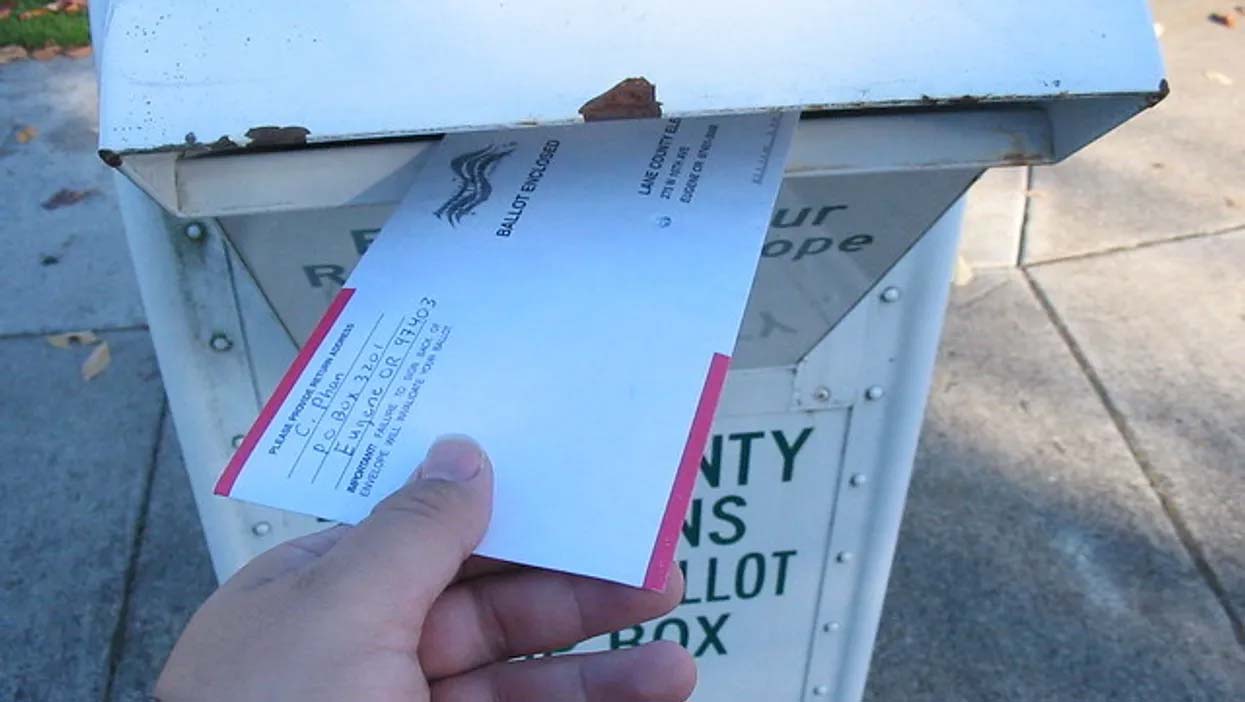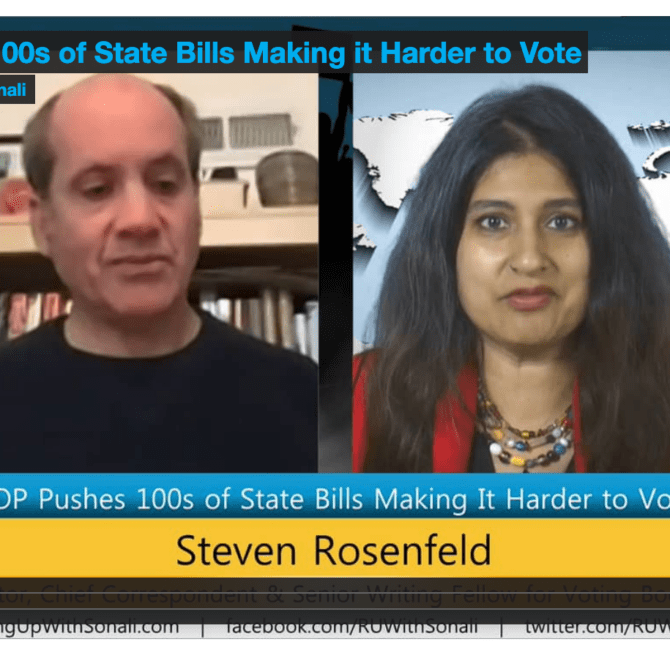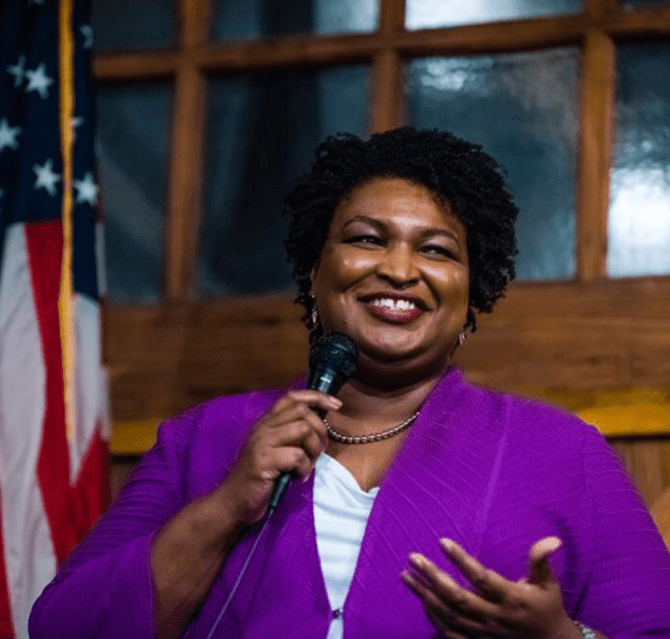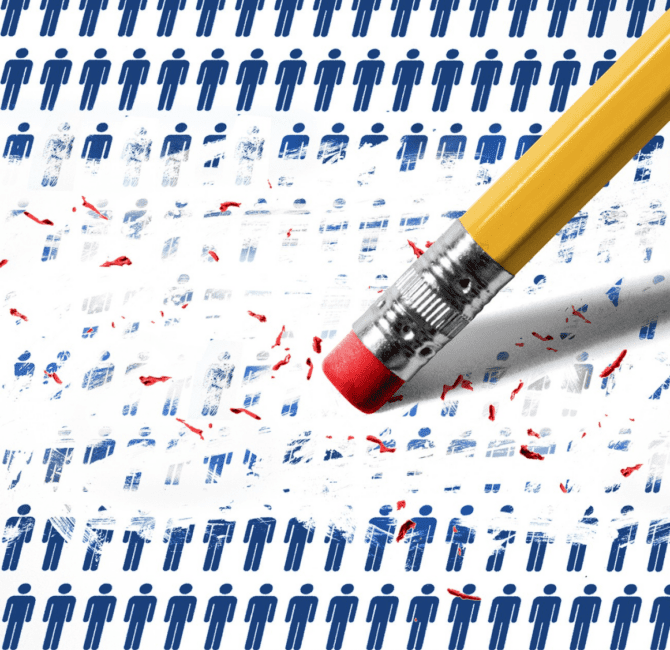In Many Red States, the GOP Puts Up Resistance to Voting by Mail

Across America, election officials responsible for the details of running elections have a clear idea of what is needed to shift to mostly mail-in voting in upcoming spring, summer and fall elections to protect voters from the coronavirus. But pockets of conservatives are resisting their advice.
In North Carolina, South Carolina, Missouri, Ohio, Texas and Florida, for example, county election managers or senior administrators at statewide election boards have detailed what should happen to have the smoothest vote-by-mail operations in coming weeks and months. Those steps include proactively helping voters to sign up, waiving rules that could disqualify those ballots and having more time to tally votes.
But the most partisan Republicans in these states, in leadership posts in state legislatures or statewide office, have rejected the advice, not acted, or have taken positions that have frustrated frontline officials, confused voters seeking advice and even sparked lawsuits.
“We as election staffers are pretty much in a difficult situation,” said Michael Winn, elections director for Harris County, Texas, which has 2.4 million voters around Houston. “We are not attorneys. We can’t answer questions with potential legal liabilities or speculate on legal outcomes, but voters want to know several things. First of all, they want to know: Can they vote by mail?”
A pattern of some red-state conservatives resisting best practices emerged in a series of recent video conferences with bipartisan election policy experts, national advocates for at-home voting and election protection activists. It contrasts with steps being taken in other red-run states and many states with Democratic leadership, where election officials are heeding advice and scrambling to restructure how people will vote this year.
For example, red-run Idaho, Indiana, Nebraska, North Dakota, South Dakota and West Virginia have all taken steps to start reaching out to voters and to expand voting by mail. But not every state where Republicans control the legislative and executive branches sees the pandemic as a reason to pivot in this direction or lay the necessary groundwork.
“The landscape in the state of Missouri is significantly different from what my colleagues describe in their respective states,” said Eric Fey, St. Louis County’s Democratic director of elections, on an April 21 call hosted by the Colorado-based National Vote at Home Institute. Fey spoke after hearing upbeat assessments from officials in Colorado, Florida and Arizona who have run sizable vote-by-mail operations for years. “It’s going to be difficult for us to grapple with here in Missouri.”
Fey laid out the broad backdrop and current hurdles. In his county, the city of St. Louis, 13 percent of the electorate voted by mail in 2018, which was above the state’s average. To start, Missouri was one of 16 states where an excuse is required to obtain an absentee ballot. But Missouri’s Republican political leaders are split about whether or not the pandemic is a valid excuse. That stance, also seen in Winn’s state of Texas, contrasts with about two-thirds of these 16 states where, for upcoming primaries, the virus has been deemed an excuse, according to an April 20 report by the Brennan Center for Justice at New York University School of Law.
“There is currently a lawsuit in our state court over whether or not people can use COVID[-19] pandemic as a valid excuse to vote by absentee ballot,” Fey said, referring to an April 17 filing. “There’s a lot of disagreement among our state officials.”
In the meantime, Fey said his office has seen a flood of calls from voters seeking an absentee ballot for municipal elections, which were moved from March 18 to June 2.
“There’s a lot of uncertainly for voters,” he said. “Voters don’t know. They are calling our office every day saying, ‘I don’t want to go out to the polls.’ ‘I feel unsafe.’ ‘I’m in a vulnerable population.’ ‘I have a compromised immune system.’ Something like that. ‘I’d like to vote by absentee ballot-what do I do?'”
Fey’s staff is urging voters to apply for an absentee ballot, which is akin to registering to vote for a second time. But his office cannot guarantee that will be the end of the process.
“All we can tell them is if you fill out that absentee ballot application and if you feel that you qualify, we will send you a ballot,” Fey said. “But we really can’t give them guidance because the court has not weighed in. Like I said, there’s a lot of disagreement at the state level Unfortunately, we’re being put in a position here where it’s going to go to the final hour for whether or not things are going to change.”
Houston’s elections director Michael Winn, speaking on a Bipartisan Policy Center teleconference on April 20, said that it was possible that some people who applied for an absentee ballot, citing the virus, might be barred from getting that ballot for Harris County’s next election on July 14 because of forthcoming court rulings.
Texas is among the states requiring an excuse to get an absentee ballot. On April 15, a Texas judge issued an order saying that all voters who feel at risk should be given an absentee ballot, but its GOP-led government is expected to appeal.
“One of the looming questions that keeps coming before us is because of this ruling, if it’s overturned in the middle of the application process, are those applications still valid,” Winn said. “And our basic stock answer is while we are waiting for advice from our legal and county attorneys, we tell voters that we will take those applications based on face value. And if they mark disability, then they will be processed. They have to mark their applications as they deem appropriate.”
Such ambiguity was not desirable, said Matt Weil, who led the call and is the Bipartisan Policy Center’s elections project director.
It is preferable “having the rules set in place as early as possible so you don’t end up in the situation where you’re accepting some applications under one set of rules and then somewhere in the middle of the process the rules change,” Weil said. “We saw that issue happening in Ohio [where the legislature voided the secretary of state’s orders]. It caused a lot of confusion. It does put election administrators in a very difficult or impossible situation.”
Ohio is the next state slated to hold its 2020 presidential primary. Its April 28 election also was rescheduled after political power plays. Ohio’s Republican Secretary of State Frank LaRose wanted to move the election to June, allow any registered voter to get an absentee ballot and set up special in-person voting centers based on social distancing, as Robert Fitrakis, a voting rights attorney from Columbus, Ohio, told an April 20 election protection teleconference organized by progressive activists. But the state’s GOP-led legislature asserted its authority and moved it up, imposed tight filing deadlines and did not change counting rules.
“It’ll be a week from tomorrow. And it’s all mail-in,” he said. He then added sarcastically, “And they’re doing a pretty good job.”
Fitrakis held up his ballot return envelope. The postage had been put on the back-on the fold where it was to be sealed and closed-rendering it “useless,” as teleconference moderator Harvey Wasserman noted. He showed how an internal secrecy sleeve for the ballot had to also be sealed or else it would not be counted. These details are among the technicalities that led to a third of the 594,000 mail-in ballots being rejected nationwide in 2018 (1.4 percent), according to U.S. Election Assistance Commission’s June 2019 report to Congress (page 14).
Fitrakis also noted that voters had to sign their name and date of birth on the return envelope, adding that he had to verify his voter registration information to ensure that his ballot would not be rejected based on his usual signature-how he first had signed it.
“I squeezed in a ‘J,'” he said, describing his correction. “I’m actually registered as Robert J. Fitrakis. So if I’d have sent it in as Robert Fitrakis, it wouldn’t have counted.”
Fitrakis, reached after the teleconference, also said that Ohio voting rights attorneys had heard that some voters were signing the date that they had voted on the ballot return envelope-not their date of birth, as required-which would cause it to be disqualified. He additionally said that in Franklin County, where Columbus was located, the only in-person voting location was in “an old strip mall” on the county’s outskirts. He said the public education efforts surrounding the new voting regime were not extensive.
“The ballots have to be postmarked by Monday the 27th,” Fitrakis said. “People don’t know-regular voters. They know their precinct. There are no precincts. People don’t know you go to the board of elections because there will be some people with disabilities voting there. It hasn’t been advertised.”
Whether or not Ohio’s April 28 primary will follow in the footsteps of Wisconsin’s fraught primary remains to be seen, but Fitrakis is not optimistic. In Wisconsin’s April 7 primary, fights between the Democratic governor and Republican legislature (aided by last-minute rulings by conservative majorities on the Wisconsin Supreme Court and on the U.S. Supreme Court) led to a chaotic mail-in election and risky in-person voting.
In 2018’s elections, 6.3 percent (168,788) of Wisconsin voters cast absentee ballots. In this year’s April election, local and state administrators worked feverishly to stand up absentee voting. Nearly 1.3 million voters requested absentee ballots. About 11,500 were never sent and another 186,000 were not returned in time to be counted. Among the in-person voting in the state’s largest and most diverse city, Milwaukee, a half-dozen voters and one poll worker reportedly contracted the virus, the city health commissioner said.
Worst Practices, Best Practices
There is no singular picture of voting in a pandemic that is emerging across the country, not when states have different laws and rules that govern the process. What can be said, trend-wise, however, is that states with the deepest recent histories of voting rights battles are seeing that legacy spill over into the sphere of expanding voting by mail in 2020.
That trend can be seen in different ways, starting with efforts by election administrators to recommend best practices and resistance by political decision-makers to act on their advice. In North Carolina and South Carolina, for example, the top staffers at their state boards of elections (called a commission in South Carolina) proposed a series of vote-by-mail reforms to be instituted in the pandemic.
The proposals, though slightly varying, reflect what has worked in states like Oregon, Washington and Colorado that have spent years shifting to voting by mail-and steps taken by other states, namely Hawaii and Utah, to also transition to absentee voting.
As Marci Andino, South Carolina Election Commission executive director, wrote in a March 30 letter to her governor, senate president and house speaker, no-excuse absentee voting should be allowed; electronic applications should be allowed; a witness signature on ballot return envelopes should be suspended; local officials should get more time to count absentee ballots; and people with disabilities-and medical personnel and first responders-should be allowed to vote electronically.
When the South Carolina legislature reconvened for a one-day session on April 8, they “took no action on providing any additional authority or changing any election rules,” said Chris Whitmire, South Carolina State Election Commission spokesman.
In North Carolina, which has some of the most restrictive vote-by-mail regulations in the country, including the requirement that two witnesses or one notary sign the ballot return envelope in addition to the voter, the recommendations by Karen Brinson Bell, executive director of the North Carolina State Board of Elections, were rejected by the state’s top Republican, Senate President Phil Berger. He said that they came from “progressive, liberal Democratic groups” and added that he did not trust any Democrats, including Gov. Roy Cooper, to oversee any elections in 2020.
In 2018, both Carolinas had less than 5 percent of their electorates vote absentee. Florida, in contrast, had 31 percent of the state vote by mail.
On April 7, Florida’s State Association of Supervisors of Elections-comprised of county election supervisors who are elected, giving them more clout than their appointed peers-wrote to Republican Gov. Ron DeSantis, saying that “Florida is not in a position, at this time, to conduct an all-mail ballot election” for August’s primary and November’s general election.
Instead, the association asked DeSantis to modify state law or grant them authority to add more early voting sites and consolidate polling places, start early voting 22 days before the election, send out mail-in ballots starting 45 days before the election, and relax the timetables for processing ballot applications.
There has been no response yet, said Mark Earley, Leon County, Florida, supervisor of elections and association secretary. “But most Supervisors, myself included, are moving forward encouraging our voters to request VBM [vote by mail] now,” he said in an email.
“Certainly, the Florida Supervisors of Elections believe that our requested rule changes should be implemented to give us the most capability and flexibility to deal with any situation we might encounter as the pandemic unfold and evolves,” Earley said. “Like all of America, we hope that the situation improves, that our poll workers can safely open our polling places, and that voters can vote in person at the polls if they so choose. But hope is not a plan.”
These requests by frontline administrators like Earley and Andino, and the red flags raised by voting rights attorneys like Fitrakis, underscore that the shift to absentee voting in the remaining 2020 primaries-in two-dozen states and territories-and in the general election in the fall is filled with details that can expedite voting or become pitfalls.
Groups like Vote at Home, which are promoting voting by mail and seeking to advise states on how to proceed, contend that the transition is not as complicated as portrayed in the media. Nor is the process untrustworthy, as partisan Republicans, including President Trump, said recently. Their top staffers and advisers have run vote-by-mail elections in Colorado and Oregon-as statewide, big city and county administrators.
“I’ve been a little worried about the national dialogue about vote by mail, from the national leaders who are saying things that are just not true,” said Judd Choate, Colorado elections director, on Vote at Home’s April 21 teleconference. “But then also this idea that voting by mail is really hard to shift to: Actually, I don’t think that it’s true-that it’s incredibly hard to shift to. I think it will take talented people working overtime to do it successfully. But I think it can be done.”
“Largely, you have to get a good print vendor that can print your ballots, your envelopes, assemble and mail,” he said, summarizing the logistics. “You need the proper technology to be able to process those ballots, and you need to turn up your teams at the county or state level, depending on whether you are trying to centralize or going with your local partners to be able to verify those ballots, do signature verification, and process those ballots, so that you could maintain confidentiality, batch [the ballots] and count. All of those processes are not foreign to elections officials. They can be done. Yes, it will be hard. Yes, mistakes will be made. But any state that is in a polling place or vote center posture right now can shift to vote by mail.”
None of the current or former election officials on these video conference calls wanted to telegraph that they could not deliver for their voters.
Choate said that Wisconsin was a success because it went from 6 percent of its electorate voting by mail to “over half of their electorate voting by mail in just a couple of weeks and still [having] amazing turnout.”
Choate did not respond when asked about 186,000 ballots not being returned in time to be counted, although Amber McReynolds, Vote at Home’s executive director and former Denver elections director, commented in a chat, “WI [Wisconsin] issue could have been solved with ballot tracking system like what Brian Corley [supervisor of elections for Pasco County, Florida] mentioned and has been implemented in various states. This provides accountability for voters and election officials know where their ballot is at every step in the [delivery] process.”
But officials on the teleconferences from states where conservatives were not helping to clarify the ground rules, such as St. Louis elections director Eric Fey, saw a hard road ahead-even as he tried to sound upbeat.
“In St. Louis County, before our municipal election was postponed until June, we went to court and we petitioned the court to have a vote-by-mail election. Now, the court turned us down because they said it wasn’t allowed by [state] law,” Fey said. “But we think that having a relatively imperfect vote-by-mail election was much better than having an in-person where people literally would have to risk their lives to go vote, and the poll workers risk their lives to work the polls. So I agree. I think it can be done.”
“But the other thing to remember,” Fey added, “is in states where it [voting by mail] is not really in place, the one thing I worry about is if you are trying to run a vote-by-mail election with a statutory framework that is not set up for in-person voting, a lot of things like cure periods [for voters to fix mistakes on their ballots], adjudication of ballots [to challenge rejected ballots or conduct recounts] and things like that, at least in Missouri we don’t have those things in place. Those are the kind of statutory hurdles, where even if you can get the vendors and the equipment and so forth, you still have those statutory hurdles.”
In other words, even if frontline officials like Fey can enroll as many voters as possible, deliver ballots, educate voters about returning them on time, and set up the machinery to count them, very close outcomes in vote-by-mail elections this fall could become a field day for partisan lawyers challenging the results. But that scenario concerns the finish line of the process, not today’s concerns: the starting line of enrolling voters and sending them ballots.
Also Available on: www.nationalmemo.com






